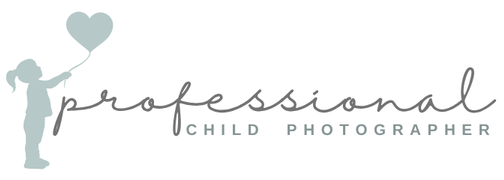What is a Professional Photographer?
A professional photographer is a dedicated visual artist who transforms moments into lasting memories but it’s so much more than just owning a nice camera and knowing how to use it.
When you work with an established professional photographer, you’ll notice the difference immediately. Let’s say you’re booking a newborn session: a true pro will guide you through everything. They’ll tell you to dress your baby in comfortable, photogenic clothing. They’ll give you pre-session tips like turning up the heat in your home and feeding baby right before they arrive. After the session, they’ll have systems in place to ensure your experience is seamless – from viewing your images to receiving your prints or digital files within a reasonable (and clearly communicated) timeframe.
In short: they have a precise routine, and they tend to underpromise and overdeliver.
Beyond Basic Photography

Professional photographers are far more than just image-makers. They maintain established portfolios, value their services appropriately, and understand photography as both an art and a business.
Many professionals further distinguish themselves through industry certifications (like the Certified Professional Photographer certification (CPP) by the Professional Photographers of America (PPA)). They may have participation in national or international photographic competitions. They may teach and mentor other photographers – to elevate the profession and professional standards. Professional photographers may contribute to trade publications and professional organizations. Some of us regularly attend trade shows and continuing education events as part of our growth and learning experiences and to keep in touch with trends in the professional photographer marketplace.
In short: many true professional photographers are fully invested in their craft – not just for themselves, but to help the industry as a whole.
What should you expect from a true professional? They’ll showcase an extensive, high-quality portfolio on their website. They’ll be able to provide a robust client list and references – or at the very least, discuss how many repeat clients they regularly serve. They’ll deliver consistently beautiful, meaningful images and partner with you to create photographs you’ll treasure for years.
Ultimately, a pro photographer is both skilled artisan and dedicated business professional, committed to transforming moments into lifelong memories.
Does The Camera Make The Photographer?
Let me be very clear: owning a camera will never make you a professional photographer, no matter how expensive it is or what size files it creates. Ownership of a camera simply makes you a camera owner.
Professional photography is a sophisticated craft that goes far beyond just the operating equipment. It might surprise you to know that even basic “toy” equipment can be wielded as a tool of art by a skilled artisan who understands the fundamentals of photography. The camera itself does not a professional make.
Scissor Owner or Hairdresser?
Imagine if anyone could call themselves a hairdresser without any training or certification. You’d walk into a salon not knowing if the person holding the scissors had years of experience or bought their shears last week and watched a Brad Mondo (who I love, btw) YouTube tutorial.…kind of terrifying, right?
But that’s exactly what’s happening in photography.
Unlike hairdressers – who must be licensed and demonstrate competency – photographers face no such requirements. Anyone can buy an expensive camera, print business cards, and call themselves a professional photographer tomorrow. There’s no certification board, no licensing requirement, no barrier to entry.
The camera is just a tool. Without the skill, training, and experience behind it, it’s as useless as fancy scissors in untrained hands.
This is why you – the consumer – need to know what to look for. In an unregulated industry, it’s buyer beware. Our goal here at Professional Child Photographer is to give you the tools to separate true professionals from hobbyists with nice cameras.
Want help evaluating photographers? We’ve created two resources for you:
Download & Print: Questions to Ask Your Professional Photographer
Rate your photographer via the comprehensive 19-Point Professional Photographer Evaluation Checklist that covers portfolio quality, business professionalism, communication skills, and technical expertise. Use it alongside the interview questions to make the most informed decision possible.
The difference between a camera owner and a professional photographer:
A camera owner might own a nice camera and maybe a lens or two, but they likely can’t shoot outside of “auto” mode. They don’t necessarily understand the physics of light, how to manage a scene, or how to pose a subject (or multiple subjects). They likely don’t have processes in place to run a business (from intake to delivery and beyond…).
A professional photographer, one who is invested in their business in the myriad of ways we discussed and is invested on providing their clients the best they can offer, demonstrates deep technical mastery, business acumen, and continuous learning. They understand how to navigate varying family dynamics…they understand basic psychological principles of working with children and families and they know how to elicit the best emotions for capture. They understand their equipment intimately and have invested time and money in continuing professional education, workshops, conventions, and industry competitions. They manage complex business operations and seamlessly integrate their business practices into the client experience.
They aren’t just doing it for “the gig”, they are doing it for profession.
Hobbyist vs. Professional: The Critical Difference
Being a hobbyist photographer is an expensive passion, and we don’t diminish the love and passion that many excellent hobbyists put forth in chasing the eternally just-out-of-reach perfect image. Many enthusiasts have decent (or quite good!) technical skills.

But they quickly discover that professional photography requires so much more:
Professional photography requires substantial business infrastructure – both forward-facing and behind the scenes. Ongoing business expenses can become overwhelming very quickly. Consistent, high-quality work demands more than occasional shooting. While hobbyists may be technically sound in image-making, they may lack the ability to pose a client, to navigate the many personalities (and sometimes meltdowns) that a photographer experiences during a photo shoot. They very likely lack backup camera and lens equipment (which means more monetary investment!).
A true professional photographer distinguishes themselves by converting their love of photography from a creative, passion-filled endeavor into an intentional, dynamic business model. They seamlessly integrate their love of photography, their love of people, and their love of being a small business owner with artistic excellence and sound entrepreneurial principles.
The Industry Challenge
The photography market faces significant challenges – both for working professionals trying to sustain a business during these challenging times, and for clients who increasingly report feelings of dissatisfaction with their photography experiences when using photographers who may not obviously be professional photographers at first glance.
Some of these challenges exist and persist because:
- There’s no universal certification process.
- The barriers to entry are perceived to be low.
- There’s a proliferation of hobbyist-wannabe-pros.
- Economic factors encourage the aforementioned “gig” economy.
All of this makes it harder for you – the consumer – to identify who’s actually a professional photographer.
Warning Signs You Aren’t Dealing With A Pro

Here are some subtle signs (red flags, if you will) that might automatically disqualify a potential photographer:
Look at their portfolio. Do their subjects have engaging expressions, or do people look stiff and uncomfortable? Are the poses flattering, or do they look forced – like they’re being blackmailed into being there? Does the photographer demonstrate an understanding of working with diverse client ages?
Check their web presence. Do they have a proper business website, or is their entire presence just Facebook and Instagram?
Listen to how they talk about other photographers. Do they publicly criticize another professional’s pricing? Do they attempt to appear more affordable by undermining industry standards?
Ask about their products. Do they rely on consumer-grade printing services like Shutterfly or Walmart? Do they simply upload files for you to download without any personal attention? Or do they have access to professional-level product offerings?
Pay attention to their professionalism. Do they make excessive personal complaints on business platforms about clients, family, other business professionals, or other photographers? Do they frequently make excuses? Do they demonstrate inconsistent work ethic?
Understanding Industry Slang/Terms
You may hear some professional photographers use terms like “shoot-and-burn photographer”, “fauxtographer”, “MWAC” (mom-with-a-camera) or even “clicktographer” when discussing industry challenges. These aren’t meant to mock aspiring photographers – they’re shorthand for specific practices that can lead to disappointing experiences for clients.
Here’s what they mean:
- “Shoot-and-burn” refers to photographers who take hundreds of photos, do minimal editing, and hand over all the files with no curation or professional finishing. You get overwhelmed with mediocre images instead of a curated collection of beautiful ones.
- “Fauxtographer” describes someone misrepresenting their skill level or experience to clients – essentially, someone posing as a professional who isn’t.
- “MWAC” is an older term, disparaging as it may be, referring to the influx of women in photography that happened to have children around the time I came into the industry, very commonly tossed around in online photographic circles in the mid-2000’s. Hi! I’m a MWAC and that’s ok. Sometimes we just accept the terminology for what it is – a fear of change in the industry.
- “Clicktographer” or “spray-and-pray photographer” refers to someone who clicks the shutter button repeatedly (hundreds of times) hoping to get one or two usable images, rather than thoughtfully composing each shot.
Why does this matter to you? These terms exist because these practices often create bad client experiences and ultimately the perception of the entire profession suffers. Understanding these terms helps you ask the right questions when hiring a photographer and identify potential red flags.
A Balanced Perspective
While everyone starts somewhere, professional photography is a serious craft. It requires extensive technical knowledge, business acumen, consistent quality, ongoing education, and professional commitment.
Our goal here at Professional Child Photographer is to elevate the professional standard – not to discourage aspiring photographers. By elevating the professional standard, we create an environment where consumers can be secure in their decision-making when selecting a photographer.

The Importance of a Systematic Approach
Professional photographers distinguish themselves through consistent, well-defined procedures. A lack of structured processes signals potential inexperience and can compromise the entire client experience – making your bargain-basement entry fee a liability.
Professional photographers create a seamless, stress-free experience through clear communication, predictable processes, reliable timelines, and professional follow-through.
Here’s what that looks like in practice:
Pre-session communication: A pro provides clear, comprehensive consultation with detailed expectations. They’re proactive and organized in their client interactions. A hobbyist? Vague, inconsistent, or minimal communication. They’re non-committal about session locations, setup times, and logistics.
Booking process: A pro offers professional, standardized contracts that protect both you and them. Everything is transparent – all session expectations are outlined clearly. A hobbyist? Informal arrangements or no formal documentation at all.
Session preparation: A pro gives thorough, specific guidance about wardrobe, location, and logistics. You feel supported and informed. A hobbyist? Minimal or last-minute instructions that leave you uncertain.
Workflow management: A pro establishes clear timelines for image delivery, communication, and follow-up. The process from booking to final image delivery is predictable and professional. A hobbyist? Unclear or constantly shifting expectations.
Why Procedural Consistency Matters
Inconsistent procedures reveal a lack of professional confidence, limited business maturity, potential reliability issues, and an unpredictable client experience.
A photographer who cannot consistently manage basic business procedures is likely to struggle with client expectations, deliver inconsistent results, and demonstrate limited professional commitment.
Critical Evaluation Checklist

When reviewing a potential photographer, carefully examine:
- Subject comfort and positioning in their portfolio images
- Expression and engagement in those images
- Overall portfolio diversity – do they show range, or is everything the same?
- Quality of client interactions – how do they communicate with you?
- Professionalism in online communication – are they responsive and clear?
Remember: Your photography investment deserves a true professional who values both artistic skill and client experience. Procedural consistency is a key indicator of a photographer’s true professional status.
Want help evaluating photographers? We’ve created two resources for you:
Download & Print: Questions to Ask Your Professional Photographer
Rate your photographer via the comprehensive 19-Point Professional Photographer Evaluation Checklist that covers portfolio quality, business professionalism, communication skills, and technical expertise. Use it alongside the interview questions to make the most informed decision possible.
A Final Note: Stylized Sessions – Proceed with Caution
Beware of photographers overly reliant on highly stylized sessions. Multiple staged, elaborate setups may hide technical deficiencies. Most professional photographers prioritize authentic family representations.
Ask detailed questions about the origin and purpose of stylized shoots. While stylized sessions can be beautiful, they should not dominate a professional portfolio. Authentic, genuine imagery that captures real family dynamics is the hallmark of a true professional photographer.

For Families:
Looking for a photographer? Start here:
• Why Supporting Small Business Photography Matters
• Why Choose Custom Photography?
• Questions to Ask Your Photographer [there is a pdf download for you print up at this link]
• Photographer Evaluation Checklist
Found this helpful?
You’re welcome to use any portion of this site on your blog, website, or social media pages!
Please credit any excerpts you use on your site or blog by copying and pasting the following on your site or social media page (with appropriate links enabled):
” This article was written by Marianne Drenthe of Marmalade Photography www.marmaladephotography.com and can be found at the Professional Child Photography site at www.professionalchildphotographer.com “
